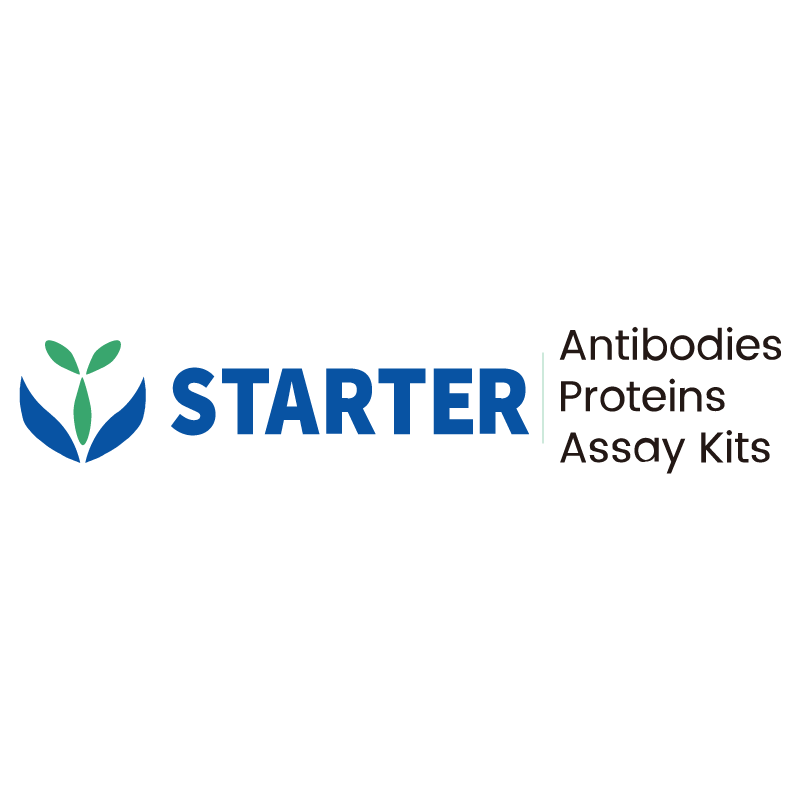WB result of 14-3-3 sigma Rabbit pAb
Primary antibody: 14-3-3 sigma Rabbit pAb at 1/1000 dilution
Lane 1: A431 whole cell lysate 20 µg
Lane 2: MCF7 whole cell lysate 20 µg
Lane 3: HeLa whole cell lysate 20 µg
Secondary antibody: Goat Anti-rabbit IgG, (H+L), HRP conjugated at 1/10000 dilution
Predicted MW: 28 kDa
Observed MW: 28 kDa
Product Details
Product Details
Product Specification
| Host | Rabbit |
| Antigen | 14-3-3 sigma |
| Synonyms | Epithelial cell marker protein 1; Stratifin; SFN; HME1 |
| Immunogen | Synthetic Peptide |
| Location | Cytoplasm, Nucleus, Secreted |
| Accession | P31947 |
| Antibody Type | Polyclonal antibody |
| Isotype | IgG |
| Application | WB, IHC-P |
| Reactivity | Hu |
| Positive Sample | A431, MCF7, HeLa |
| Purification | Immunogen Affinity |
| Concentration | 0.5 mg/ml |
| Conjugation | Unconjugated |
| Physical Appearance | Liquid |
| Storage Buffer | PBS, 40% Glycerol, 0.05% BSA, 0.03% Proclin 300 |
| Stability & Storage | 12 months from date of receipt / reconstitution, -20 °C as supplied |
Dilution
| application | dilution | species |
| WB | 1:1000 | Hu |
| IHC-P | 1:250-1:1000 | Hu |
Background
14-3-3 sigma (also known as SFN or stratifin) is a member of the highly conserved 14-3-3 protein family, functioning as a negative regulator of the cell cycle. It is primarily induced by p53 and plays a crucial role in initiating and maintaining cell cycle checkpoints after DNA damage, particularly arresting the cell cycle at the G2/M phase. This protein acts as a tumor suppressor in various cancers by regulating the stability of tumor suppressor genes and inhibiting cell proliferation. Additionally, 14-3-3 sigma interacts with multiple proteins to modulate signaling pathways, such as Akt/mTOR, and can influence processes like protein synthesis and cell growth. Its dysregulation is associated with chemoresistance and poor prognosis in several malignancies, highlighting its potential as a therapeutic target.
Picture
Picture
Western Blot
Immunohistochemistry
IHC shows positive staining in paraffin-embedded human tonsil. Anti-14-3-3 sigma antibody was used at 1/1000 dilution, followed by a HRP Polymer for Mouse & Rabbit IgG (ready to use). Counterstained with hematoxylin. Heat mediated antigen retrieval with Tris/EDTA buffer pH9.0 was performed before commencing with IHC staining protocol.
IHC shows positive staining in paraffin-embedded human colon. Anti-14-3-3 sigma antibody was used at 1/250 dilution, followed by a HRP Polymer for Mouse & Rabbit IgG (ready to use). Counterstained with hematoxylin. Heat mediated antigen retrieval with Tris/EDTA buffer pH9.0 was performed before commencing with IHC staining protocol.
IHC shows positive staining in paraffin-embedded human cervical squamous cell carcinoma. Anti-14-3-3 sigma antibody was used at 1/1000 dilution, followed by a HRP Polymer for Mouse & Rabbit IgG (ready to use). Counterstained with hematoxylin. Heat mediated antigen retrieval with Tris/EDTA buffer pH9.0 was performed before commencing with IHC staining protocol.
IHC shows positive staining in paraffin-embedded human breast cancer. Anti-14-3-3 sigma antibody was used at 1/250 dilution, followed by a HRP Polymer for Mouse & Rabbit IgG (ready to use). Counterstained with hematoxylin. Heat mediated antigen retrieval with Tris/EDTA buffer pH9.0 was performed before commencing with IHC staining protocol.


